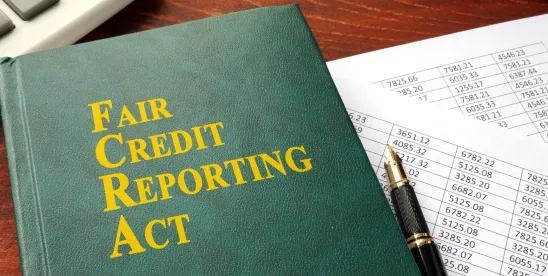Huff v. TeleCheck Services, Inc., 923 F.3d 458 (6th Cir. 2019)
This case involved an alleged violation of the FCRA where the plaintiff’s check verification report omitted certain information about his accounts and transactions. To understand the decision, some background is helpful. When a consumer writes a check to a merchant, the consumer generally provides a form of identification like a driver’s license number. The retailer then sends the driver’s license number and the bank account number on the check to a check verification company such as TeleCheck Services. TeleCheck will then recommend that the retailer accept or refuse the check based upon the consumer’s check writing history. Under the FCRA, consumers can request from check verification companies a copy of their file, which generally shows the consumer’s transactions and bank accounts. Plaintiff requested his report and claimed it was incomplete, in violation of the FCRA. The district court granted summary judgment, finding that plaintiff did not have standing.
On appeal, the Sixth Circuit began by asking whether (1) the plaintiff suffered an actual injury; (2) there was a risk of imminent injury, and (3) “Congress had authority to establish the injury in view of its identification of meaningful risks of harm in this area.” Huff, 923 F.3d at 463.
On the first issue, the panel held that no actual injury had been shown, as the plaintiff failed to “allege, much less prove, harm in the flesh-and-blood or dollars-and-cents sense of the term.” Id.
The panel also found no risk of imminent injury, as plaintiff proffered no evidence concerning “the difference between what [he] would have done with a report containing the linked information and what he did with the report he received,” and thus the risk of the defendant’s action causing a future check decline was “highly speculative.” Id. at 463, 464. The panel also observed that the defendant had minimized the risk of harm by including a disclaimer that informed the plaintiff that his “record is linked to information not included in [the] report, subject to identity verification prior to disclosure.” Id. at 461, 464.
Finally, the panel held that there was also no evidence the defendant’s statutory violation created a cognizable Article III injury. This was so, the panel concluded, because “Congress cannot conjure standing by declaring something harmful that is not, by saying anything causes injury because the legislature says it causes injury.” Id. at 465. As Congress had provided no “guidance about the ills [the] statute is meant to remedy,” and had “not attempted to show how technical violations of the [FCRA] that carry no actual consequences or real risk of harm are concrete injuries,” the court concluded the plaintiff lacked standing.
The full Class Action Litigation Newsletter covering all Circuits available here.




 />i
/>i

